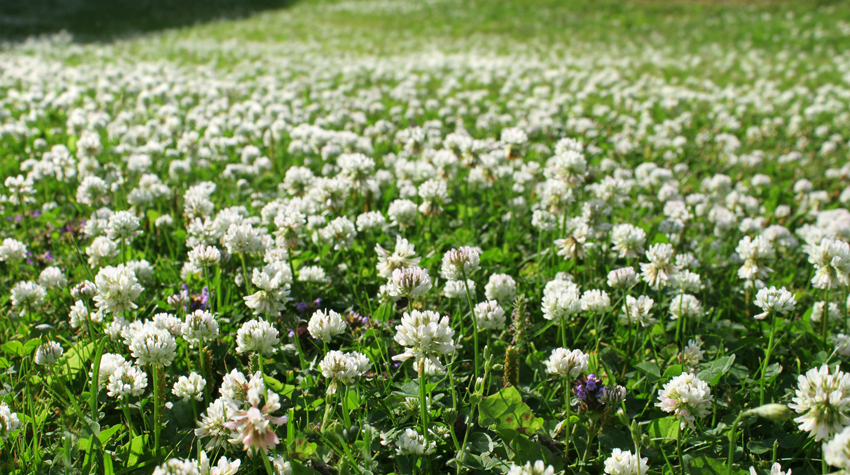Enough nitrogen for organic farming
One of the major challenges in organic farming is maintaining a positive balance in the nitrogen cycle. Nitrogen is an important nutrient for plants, but it is removed from the soil whenever crops are harvested. It can therefore be difficult to maintain a sufficiently high level of accessible nitrogen in the soil without using artificial fertilisers. A new research project intends to change this with a grant of DKK 17 mio. from the Innovation Fund Denmark to Stig Uggerhøj Andersen.

Easy access to large amounts of artificial fertilisers in conventional farming has meant a reduction in investments in optimising the natural nitrogen cycle. In collaboration with his colleagues, Assistant Professor Andersen from the Section for Plant Molecular Biology, Department of Molecular Biology and Genetics, Aarhus University, has therefore decided to carry out a project to ensure an increased supply of biologically fixed nitrogen in organic farming.
This is because a solution to the problem is to increase the efficiency of nitrogen-fixing plants, which can take place in areas such as fields where a grass and clover mix is cultivated and widely used as the basis for producing organic milk and meat.
The nitrogen cycle in such production systems begins with the fixation of atmospheric nitrogen by soil bacteria in white clover root nodules. From here it is transported to the clover plant itself and on via the surrounding soil and grass to end up in grass-eating cows.
It is this cycle that the researchers will optimise by systematically studying the correlation between clover yields and the genetic composition of the three components of the nitrogen cycle – soil bacteria, clover and grass. For this purpose, they will develop new statistical methods that specifically take into account the genetic interactions between species.
Other participants from Aarhus University Luc Janss, Centre for Quantitative Genetics and Genomics, Torben Asp, Section for Crop Genetics and Biotechnology, and Mikkel H. Schierup and Bjarni Vilhjalmsson from the Bioinformatics Research Centre.
Additional participants: York University (Peter Young), DLF Trifolium (Niels Roulund and Christian S. Jensen), Legume Technology (Bruce Knight) and Videncentret for Landbrug (Inger Bertelsen).
Budget: DKK 22,5 mio.
Contribution from the Innovation Fund Denmark: DKK 17 mio.
Duration: 5 years
Contact information
Assistant Professor Stig Uggerhøj Andersen
Department of Molecular Biology and Genetics, Section for Plant Molecular Biology
Aarhus University
e-mail: sua@mbg.au.dk. Tlf. 8715 4937.
